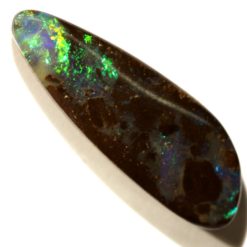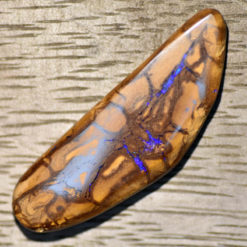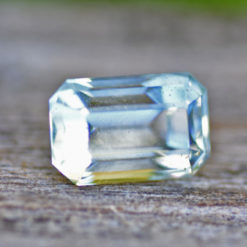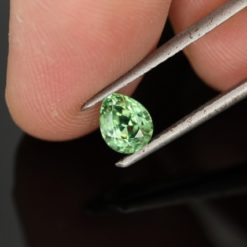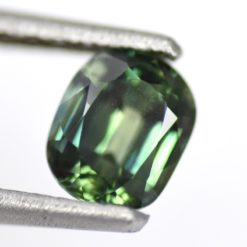No products in the cart.
Gemstone Information
What is Geode Rock And What Beauty Lies Within Them?
Sometimes the simplest things in life have a complex world of beauty within them. This is the case for a certain species of rock called geode rock. From the outside, these fascinating specimens appear to be a simple rock. Yet beneath the surface exists a sparkling, exquisite and colorful world.
From the colors of geodes and their origin to the chemical composition and the array of ways you can use geode rocks in your everyday life, there is so much to learn about geodes. Let’s crack open the door to the stunning world of geode rocks.
What is Geode Rock?
Geode rocks are crystalline structures, or hollow spheres filled with crystals. Collectors and buyers love geode rocks because, from the outside, they look about the same as any ol’ regular rock. Unlike other rocks, when you break a geode in half, you’re greeted with a stunning spectacle of sparkling colors and patterns. What’s happening in nature to create such a treasure?
Geode rocks are the product of lava and limestone that trickles between the layers of sedimentary or igneous rock. Over time they become solidified and encapsulated by their host rock as they form. These once-normal, now incredible rocks become geodes when the outer parts of the rock start to solidify and harden.
At that point, the trapped precipitation settles along the inside of the rock. Since there is enough silica in the small, hollow space, the precipitation transforms into crystals that line the internal walls of the cavity.
Because of their vivid crystalline organs, geodes are commonly collected and displayed in museums and used for healing. Few natural wonders—let alone rocks—are as diverse, functional and captivating as geode rocks. So, where are they found in the world?

Where Do Geode Rocks Come From?
Geode rocks thrive in areas with prominent deserts or volcanic regions. That’s because these regions have the perfect ingredients to grow the minerals that form geodes. Near volcanoes, they grow in layers of volcanic ash. Geode rocks are also very abundant in areas that are rich in limestone and basaltic lava.
Two of the most abundant sources for geode rocks are in Idaho, U.S.A., and the Namibian city of Tsumeb. Other places in the United States where geodes are often found include Arizona, California, Iowa, Nevada, and Utah. Believe it or not, the official state rock of Iowa is the geode. With such a unique rock in their state, it’s easy to see why Iowans are so proud.
What Colors are Geode Rocks?
Nature creates each geode to be a one-of-a-kind treasure. Which means it’s impossible to find two geodes that look the same. In fact, geodes get their name from the Greek word “geoides,” which means “earthlike.”
Because each is its own unique rock, the color, shape, size, and weight varies from rock-to-rock. A geode’s interior remains a mystery until you break open the rock and reveal what magical colors are inside.
From the exterior, the rock appears like any other rock: grey and earthy. However, it’s not uncommon to find geode rocks that are a deep navy blue, charcoal or black. Still, they do a marvelous job blending in with their environment. It’s highly likely that you’ve come across a geode without knowing it. Because they look like any old rock without the flash and exuberance of their interior on display, it’s easy to pass over them without even noticing.
When geodes form, the crystals within are either amethyst, quartz, or calcite. Amethyst is purple, while quartz tends to be light pink or clear in color. Calcite is usually transparent as well, but some people view it as white rather than clear. Remember that each geode is unique, so these are just common colors but not the entirety of the vivid color spectrum geodes have.
What is the Breakdown of Geode Rocks?
So, why do geodes get to be so utterly mesmerizing while other rocks remain, quite simply, just a rock? Geodes form from a chemical combination of copper, uranium, silicon, oxygen, and hydrogen. It’s this perfect chemical mixture that utilizes the elements and minerals necessary to form such a superb natural specimen.
While geodes are the topic of chemical fascination, they also have immense healing properties.

How to Use Geode Rocks for Healing
Geodes are used by people all over the world to invite positivity and healing into their lives. Because of their inner beauty, they are typically sliced into thin slabs and sold as decorative pieces. They can be as small as a magnet or massive specimens placed as art in a home or gallery. Some geodes are used to make salt lamps, while others become bookends.
Geodes have been embedded into pottery pieces like coffee mugs, which makes for a totally unique and special addition to your morning cup of jo. Sculptures often incorporate geodes, and some very talented artists even create nightlights with geodes as the light bulb cover. Geodes can be broken into smaller pieces to use as magnets for the fridge, coasters for your coffee table, and ornaments for special occasions.
And while it’d be easy to mistake geodes as nothing more than stunning decor, they have powerful holistic and healing properties.
Many people who use healing crystals will intentionally place geode rocks around their homes. This affects the aura and energies in their living spaces, inviting relaxation and calm into the home. Additionally, geodes help reduce negativity while promoting courageousness and confidence.
Geodes are a profound example that often what we see is only a mere glimpse of what’s going on beneath the surface. At first glance, it’s easy to toss a geode to the side and overlook its hidden beauty. However, crack one open and you’ll be greeted with sheer awe at the sparkling crystals, colors and patterns radiating from within this seemingly mundane shell.
Geodes might seem like any other rock, yet when cracked open, they reveal a colorful world of depth and beauty.


